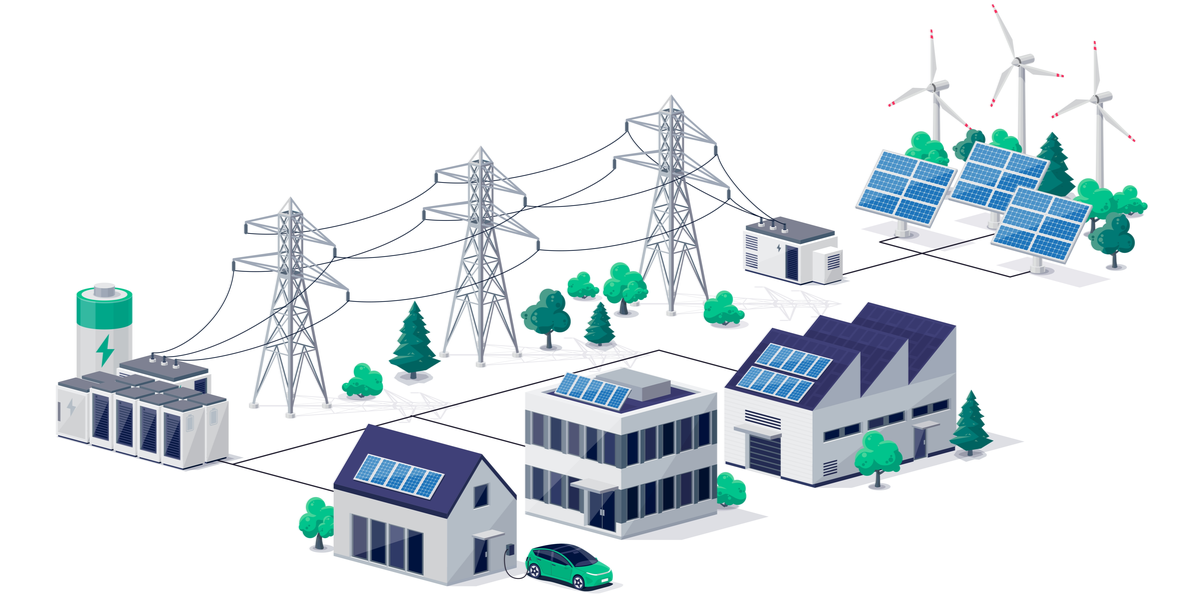Eye on Infrastructure: Electrifying Ports Saves Fuel, Money, and Public Health
Let's Save Energy
Alliance to Save Energy's Blog
Eye on Infrastructure: Electrifying Ports Saves Fuel, Money, and Public Health

This is the second post from the Alliance’s “Eye on Infrastructure” blog series, which will highlight how policymakers can work to ensure energy security, economic competitiveness, and savings for American taxpayers by considering the role of energy efficiency in rebuilding America’s infrastructure.
The previous segment of the “Eye on Infrastructure” series focused on how tax policy and financing components could help leverage public dollars to invest in modern energy infrastructure. In today’s post, we are going to examine the impacts of improving energy efficiency in ports. At an Alliance’s briefing on Capitol Hill last month, ports were also identified by industry experts as an important part of American infrastructure that has significant potential for energy efficiency improvements. At the epicenter of trade and travel, ports require a significant amount of energy to move massive amounts of cargo from ships to terminals, rails, and trucks.
Cutting costs, improving air quality through efficiency
U.S. port and private sector partners are projected to spend more than $150 billion on port-related infrastructure through 2020, on top of an additional $24.8 billion of investment by the federal government. If even a portion of those investments were allocated to making port operations more energy efficient, ports would cut fuel costs and see millions of dollars in savings. Additionally, such investments would also have the added benefit of significantly improving air quality.
Methods for improving operational efficiency at ports include onshore power supply, electric tugboats, and capabilities enabled by “smart grid” technologies such as peak demand response and energy storage. In one example, efficiency gains start with significant electrification efforts. One of the best ways to maximize energy efficiency in ports is to equip vehicles and cranes with electric or hybrid fuel systems.
Leading by Example: Port of Savannah
In 2012, Southern Company and Georgia Power worked with the Georgia Ports Authority and the Electric Power Research Institute to develop an electric rubber-tired gantry crane program. Gantry cranes are used to move large containers on and off ships and are fueled by large displacement diesel generators that supply the power needed to quickly move the cargo. However, diesel fuel is expensive and prices are only projected to increase over time. This forces ports to spend a significant portion of their operating costs on diesel fuel for the cranes, which also emits significant amounts of pollutants into the air. However, the new electric cranes are powered through 480-volt conductor rails and use an auto-engage system to switch between diesel power and electric power. They capture the energy that is lost when lowering boxes with diesel power and continuously feed power back to the grid. This allows the cranes to power themselves for 18 minutes of every hour of operation, greatly reducing the overall energy use of crane operations and making all cargo transfers more energy efficient.
Once the program is complete, the Port of Savannah will save $10 million each year on fuel savings from the cranes alone – allowing the port to better compete in an international market. But Savannah did not stop there. All 27 ship-to-shore cranes at Savannah are now electrified along with 84 electrified refrigerated container racks, saving an aggregate 6.36 million gallons of fuel annually. As of 2015, the Port of Savannah employed 15,000 people and had its busiest year to date in loaded container traffic in 2016. As port volume grows and container numbers increase, business revenues support the state. Every dollar spent by the port industry and port users generates an estimated additional 70 cents for Georgia’s economy.
Improving communities through electrification
Besides reducing energy consumption, saving money, and fostering economic growth, electrification helps to keep port communities clean. Diesel fuel emissions contribute to serious public health problems including premature mortality, increased hospital admission for heart and lung disease, increased cancer risk, and increased respiratory symptoms, particularly in children. Forty percent of ports are in air quality non-attainment or maintenance areas, with elevated levels of air pollution affecting the nearly 40 million Americans who live close by. Fortunately for those communities, the potential for electrifying several components of port operations poses a viable solution for a serious public health problem in addition to providing numerous economic benefits to port authorities and their local communities.
While energy efficiency measures can bring upfront costs, the positive impacts of such measures are worth it. If other ports follow Savannah’s lead, both communities and businesses would be best served by allocating a portion of the billions to make port operations more energy efficient.
STAY EMPOWERED
Help the Alliance advocate for policies to use energy more efficiently – supporting job creation, reduced emissions, and lower costs. Contact your member of Congress.
Energy efficiency is smart, nonpartisan, and practical. So are we. Our strength comes from an unparalleled group of Alliance Associates working collaboratively under the Alliance umbrella to pave the way for energy efficiency gains.
The power of efficiency is in your hands. Supporting the Alliance means supporting a vision for using energy more productively to achieve economic growth, a cleaner environment, and greater energy security, affordability, and reliability.



